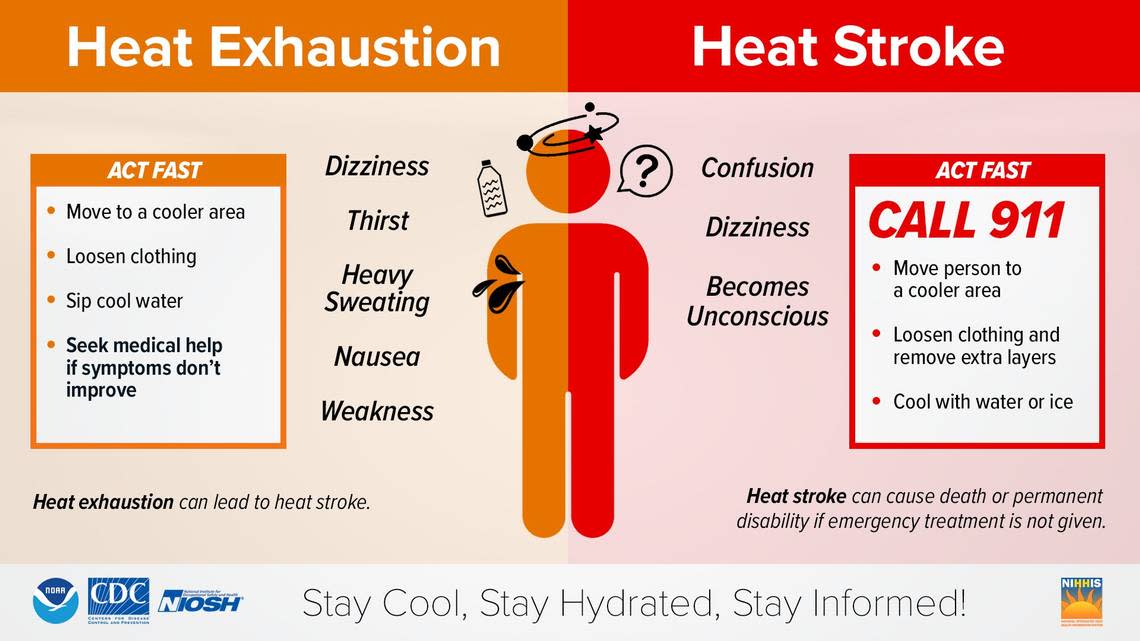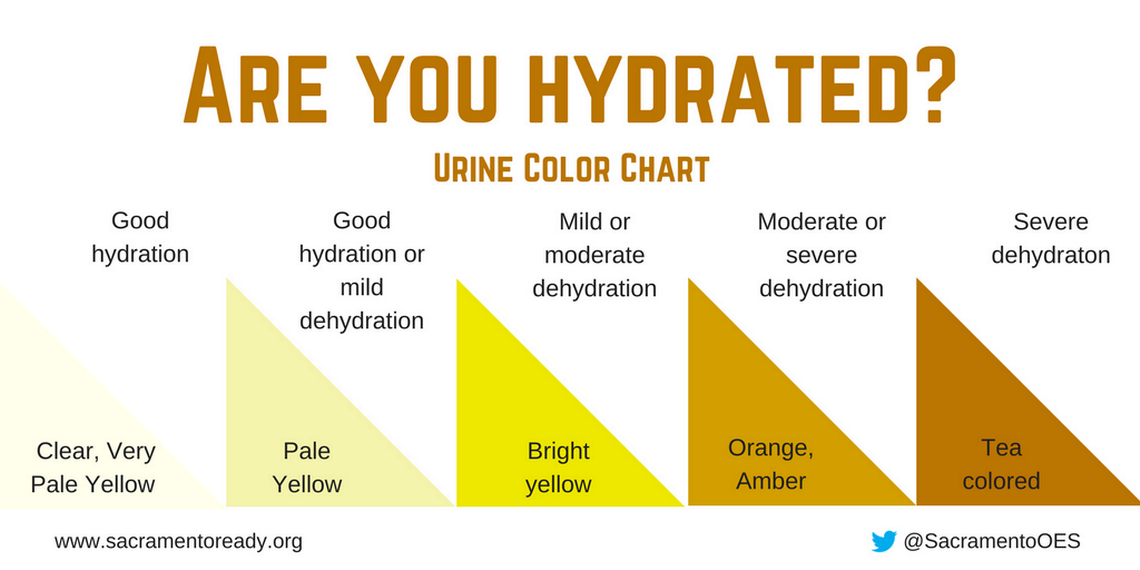Brace for more near-record heat in Boise with these tips, take our heat knowledge quiz
Temperatures in the Treasure Valley will soar to near-record highs this week, marking back-to-back weeks that Boise has experienced heat wave-level temperatures.
Although the hot weather presents the perfect opportunity to enjoy a float down the Boise River or spend a day at a local park, it poses a series of risks for humans and animals.
Below are some frequently asked questions that you need to know heading into the hottest period of the year:
What is heat exhaustion and stroke, and how to spot it
Heat-related illnesses should be of heightened concern for infants and children up to the age of 4, people 65 and over, people who are overweight and those who are ill, according to the Centers for Disease Control and Prevention.
Heat stroke kicks in when the body cannot control its temperature, and its sweating mechanism fails, resulting in body temperature rising as high as 106 degrees within 10 to 15 minutes.
Heat exhaustion is a less-severe form of heat stroke that develops over several days instead of in a short period like heat stroke. It occurs when there is an inadequate or imbalanced replacement of fluids in the body and can turn into heat stroke if not addressed quickly.
“People should be mindful to always have a place to cool off. Make sure if you go out or travel, have something to drink,” National Weather Service meteorologist Les Colin told the Idaho Statesman.
“Make sure you keep your animals well-watered and generally inside, out of the sun,” he continued. “Basically normal, common sense measures to not allow yourself to be overcome by the heat.”
Heat exhaustion
Dizziness
Thirst
Heavy sweating
Nausea
Weakness
What to do: Move to a cooler area, loosen clothing and sip on cool water. Seek medical help if the symptoms don’t improve because heat exhaustion can lead to heat stroke.
Heat stroke
Confusion
Dizziness
Becoming unconscious
What to do: Move the person to a cooler area, loosen clothing, remove any extra layers, and cool with water or ice.

Animal safety
Under Idaho’s animal care law — Section 25-3504 — you can be cited with a fine between $100 and $5,000 and up to six months in jail for a first-time offense of leaving an animal in a hot car. But regardless of the punishment, leaving an animal in a hot car can be much more severe for the animal than for the owner.
On an 85-degree day, it only takes ten minutes for the inside of a car to reach 102 degrees even when a window is cracked, according to the American Society for the Prevention of Cruelty to Animals. Within 30 minutes, the temperature in the car can be as high as 120 degrees.
Anything over 77 degrees is generally considered too hot to walk a dog and puts them at risk of heat stroke. Symptoms of overheating include:
Excessive panting or difficulty breathing
Increased heart and respiratory rate
Drooling
Mild weakness
Stupor
Collapse

Animals with flat faces such as pugs and Persian cats are more susceptible to heat stroke because they can’t pant as effectively, Dr. LaCheryl Ball, who works for the ASPCA community medicine team, told the Statesman.
“Make sure your pet is always hydrated, particularly when it is especially hot or humid. If your pets are outside, make sure they have a shady area to get out of the sun and do not over-exercise them,” Ball said. “Some dogs don’t know when to stop exercising! On hot days, it is better to err on the side of caution by selecting times of day when the sun is not at its hottest and end a play session early to prevent overheating.”
How much should you drink?
Drinking water is necessary regardless of the time of year, but it’s especially important in the summer to stave off dehydration and heat exhaustion. The CDC recommends that daily water intake should equal 15.5 cups for men and 11.5 cups for women.
You can determine your hydration levels based on urine color, with clear or very pale yellow urine indicating good hydration up to orange or amber-colored urine indicating moderate or severe hydration.

How can you stay cool in Boise?
Homeless services group Our Path Home has partnered with the City of Boise to provide welcoming spaces that offer a cool spot to relax during the heat of the day for all residents.
Our Path Home’s primary focus is on the homeless community, but the organization said on its website that the cooling spaces are open for anyone.
The following map shows the seven locations around Boise that offer cooling spaces:
Ann Morrison Park - 1000 S. Americana Blvd.
Boise City Hall - 150 N. Capitol Blvd.
Cathedral of the Rockies - 717 N. 11th St.
Corpus Christi - 525 S. Americana Blvd.
Our Path Home Outreach - 511 S. Americana Blvd.
Downtown Boise Public Library - 715 S. Capitol Blvd.
Downtown YMCA - 1050 W. State St.
Weather safety quiz
Think you’re a pro at hot weather safety? Take our quiz below to see how prepared you are for outdoors adventures this summer:
